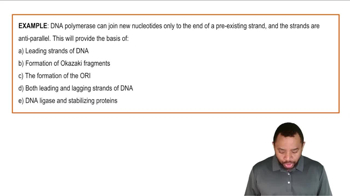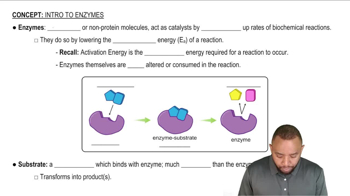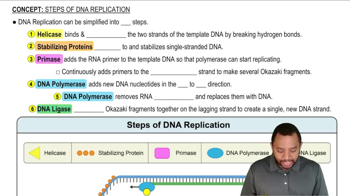Textbook Question
How do you explain the observation that pepsin, a digestive enzyme found in the stomach, has a high catalytic activity at pH 1.5, while trypsin, an enzyme of the small intestine, has no activity at pH 1.5?
40
views
 Verified step by step guidance
Verified step by step guidance



How do you explain the observation that pepsin, a digestive enzyme found in the stomach, has a high catalytic activity at pH 1.5, while trypsin, an enzyme of the small intestine, has no activity at pH 1.5?
What are the cellular advantages to feedback inhibition?
Activation of a zymogen is by covalent modification. How might phosphorylation or dephosphorylation (also covalent modification) modify an enzyme to make it more active (or more inactive)?
Name an enzyme that acts on each molecule.
c. RNA
What classes of enzymes would you expect to catalyze the following reactions?
c. <IMAGE>
What kind of reaction does each of these enzymes catalyze?
b. A transmethylase